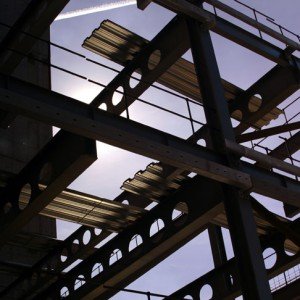 By Grace Lewis, content and community manager at Barbour Product Search, the online building product directory.
By Grace Lewis, content and community manager at Barbour Product Search, the online building product directory.
There has been a lot of talk over the past few years in the construction industry regarding Building Information Modelling (BIM).
In 2011, the Government Construction Strategy announced that all government-funded construction projects will “require collaborative 3D BIM” (with all project and asset information, documentation and data being electronic) by 2016. With only a year to go, companies have been busy preparing themselves to become ‘BIM-ready’ to ensure they don’t miss out on opportunities.
But what is BIM? And how will it benefit the construction industry?
BIM stands for Building Information Modelling and is a design process that generates a digital model to represent an entire construction project, driving significant efficiencies for all involved parties, from design through construction, occupation and eventual demolition. More than just a 3D version of computer aided design (CAD), BIM contains rich parametric data including not only geometry, but the properties of building components.
In terms of using BIM, the Government BIM Task Group states: “The rich 3D experience; digital simulations; rehearsals of all stages of the design, build and operate process; and the information within the models facilitate well-informed decision making resulting in better business outcomes, clarity, improved communication, de-risking and ultimately better efficiency.”
Already we are starting to see the benefits of BIM, including improvements in efficiency and reductions in waste. BIM can make the whole process as efficient as possible, and can also help to improve health and safety processes.
For example, with clash detection and automated checking, BIM can help sensibly plan work so the risks involved are managed from start to finish as well as helping to consult and engage with site workers about the risks they need to be aware of.
Case study: The RCC Hadlow College Project
Designed and built by Eurobuild, the Rural Regeneration Centre at Hadlow College in Kent was the first certified PassivHaus educational building in the UK. On this project BIM was used in a variety of areas, including health and safety:
Methods statements: The method statement for the crane lift schedule (of panel components) was in the form of a visual plan. The project CDM Co-ordinator stated that this communicated requirements more clearly than any written statement could. It also allowed for maintained access zones, for example it defined where the lorry and the crane would be sited to avoid clashes despite a high quantity of material on a constrained site.
Value and Aftercare: In terms of aftercare, a website was built to be used by the client team and hosted by Eurobuild that combined all the information required for the health and safety, O&M (Operation & Maintenance) and the BREEAM User Guide. This was more cost effective than creating the standard lever arch folders and resulted in a more accessible and updateable facility.
Eurobuild found that the efficiency of working in 3-D revolutionised their process and the quality/reliability of the project outputs and drove a far greater understanding of buildings.
The benefits of BIM are as apparent in the build phase and management of a building as they are in the design process so as an industry we should embrace this new way of working ahead of 2016.
Further Information
Read the full RCC Hadlow College Project case study.
 Grace Lewis is the Content & Community Manager for Barbour Product Search, an image-led, digital building product directory. The site is regularly updated to provide a comprehensive resource for architects and other specifiers looking for products, inspiration and information on construction trends. Grace is also passionate about BIM, and regularly writes to help support product manufactures adopt the technology and process, as well as being an active working group member of BIM4M2. Read more articles about BIM.
Grace Lewis is the Content & Community Manager for Barbour Product Search, an image-led, digital building product directory. The site is regularly updated to provide a comprehensive resource for architects and other specifiers looking for products, inspiration and information on construction trends. Grace is also passionate about BIM, and regularly writes to help support product manufactures adopt the technology and process, as well as being an active working group member of BIM4M2. Read more articles about BIM.
Follow Grace on Twitter.
Approaches to managing the risks associated Musculoskeletal disorders
In this episode of the Safety & Health Podcast, we hear from Matt Birtles, Principal Ergonomics Consultant at HSE’s Science and Research Centre, about the different approaches to managing the risks associated with Musculoskeletal disorders.
Matt, an ergonomics and human factors expert, shares his thoughts on why MSDs are important, the various prevalent rates across the UK, what you can do within your own organisation and the Risk Management process surrounding MSD’s.



